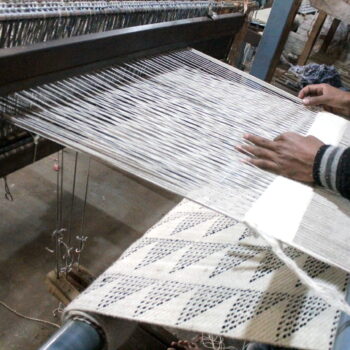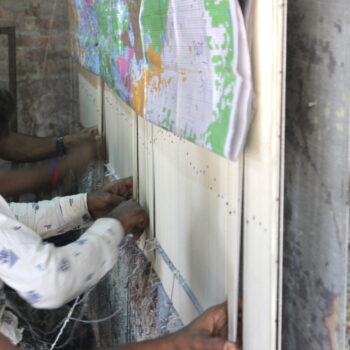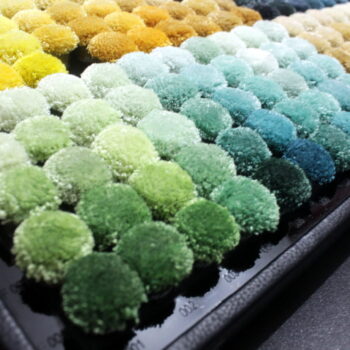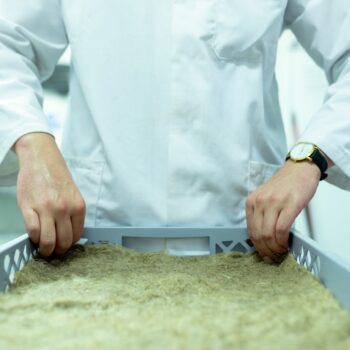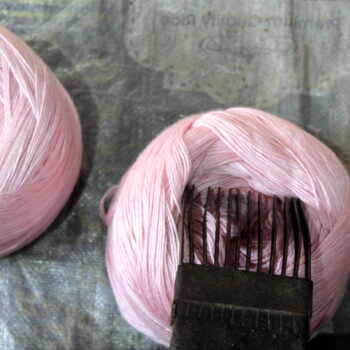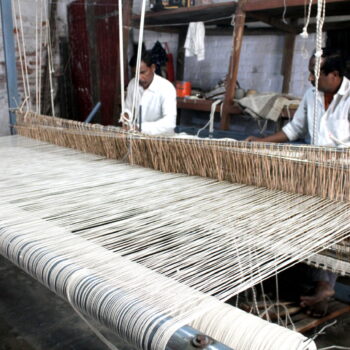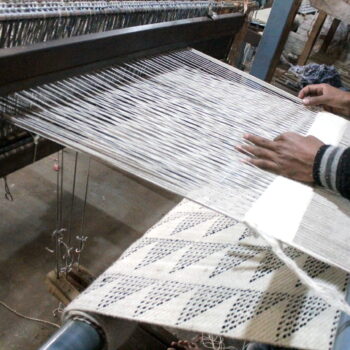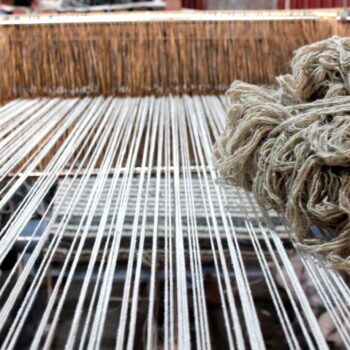CARPET MANUFACTURING PROCESS

Inspiration

Design

Color
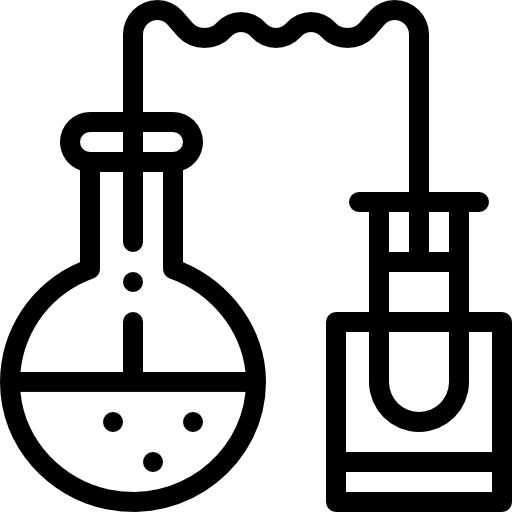
Lab Testing

Dyeing
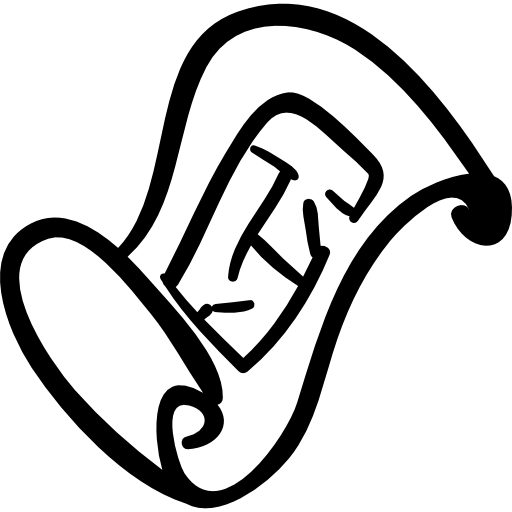
Naksha

Preparing the Loom

Weaving

Off Looming and Treatments

Inspection

Final approval and Packing

Approval
Inspiration
This is the first step in making any carpet. To weave any carpet, the weaver should have a clear picture of the inspiration or idea behind the product to be made. It helps artisans to create a unique design as per the customer’s choice.
Design
After an idea or theme is approved, designing comes into action. As we create customized designs for specific needs, it is decided that whether a customer wants contemporary design or a classic design, type of weaving medium they want, texture and pattern of the carpet.
Color
Once the design gets final then the color scheme is decided. The shades are matched as per the design so that the end product comes out to be a unique piece and matches the expectations.
Lab Testing
The color standardization of the raw material is done through rigorous lab testing. The quality of raw material used is up to the mark and the colors match the exact color scheme as decided and approved during lab testing.
Dyeing
To match the color scheme, fiber needs dyeing. Each kind of fiber has a different method of dyeing. The dyeing work is executed with extreme care using eco-friendly processes so as to minimize waste and ensuring health safety of the workers.
Naksha
It is just like a blueprint of the carpet design and color scheme. Earlier, Naksha was a hand-made document and even coloring was done by hand. But now, most manufactures use tools such as AutoCAD for creating carpet designs too.
Preparing the Loom
The base of preparing a carpet is the loom. The weavers prepare a loom on which carpet weaving is done. The number of warps is called taana and wefts are symmetrically hung on the ball (kalbi) is known as bana. Now with the help of Naksha, weaving techniques to be used and dyed fibers, weaving of carpet begins. Tools used in loom are Gucchi (the poms) and Gucchai (used for straightening the entangled knots).
Weaving
Weaving is an effort-intensive activity which, at times, takes up to a year to complete a single design. The weavers are highly skilled as they can tie up to 9000 knots in a day. They use a wide variety of techniques of weaving to create various types of carpets. The weaving techniques that are used, include hand-knotting, hand tufting, flat weaving, and hand screening. Tools used while weaving a carpet are Chura (it is a metal blade, forged to cut the knots evenly without damaging the yarn) and Punja (a fork-shaped tool is used to press and adjust the wefts after every row is woven).
Off Looming and Treatments
After finishing the weaving process, a carpet is removed from the loom and sent for washing to remove the dirt, dust, grease, or any stains on the carpet. Next, the carpet goes through various treatments such as shearing, embossing or carving, side or edge binding, singeing, final wash, drying, and stretching.
- Shearing: It is a process of cutting the piles to level them to the same height.
- Embossing/Carving: It is a process of cutting the piles to give the motifs more detailing and 3D effect. This is also known as Gul Tarashana.
- Side/Edge Binding: It is a process of giving carpet more strength by binding the sides with a much thicker and doubled thread, giving it a finished look. Also known as Pechai.
- Singeing: A process of burning the protruding fibers at the back of the carpet, which gives it a clean and finished look.
- Final wash: Once the carpet goes under the above treatment then final washing is done which gives it shine and lustre.
- Drying: Usually drying is a traditional process of putting the carpet in sunlight for 2-3 days to get dry. Nowadays, it is done in drying chambers where the temperature could be maintained to remove moisture and facilitate quick drying.
- Stretching: A carpet is tied tightly to keep it straight as when it is removed from the loom the edges might fold.
Inspection
When a carpet comes out as finished after all treatments, a final inspection happens. Clipping is done to remove the unwanted threads or any minute imperfections are done away with. A proper quality check is ensured to check the design and pattern, and if the carpet is a replica of the Naksha.
Final approval and Packing
Once the inspection is complete, the finished carpet is sent for final approval by the designer. Upon approval, it goes for packing and shipping.
